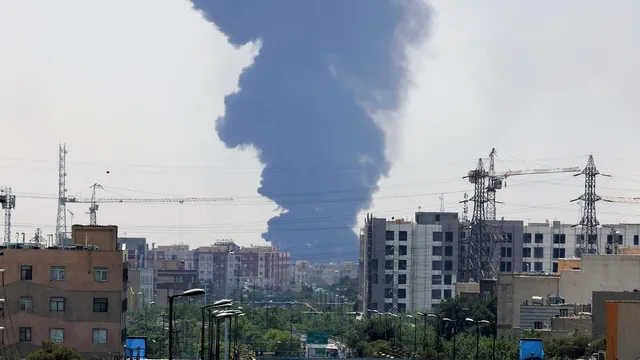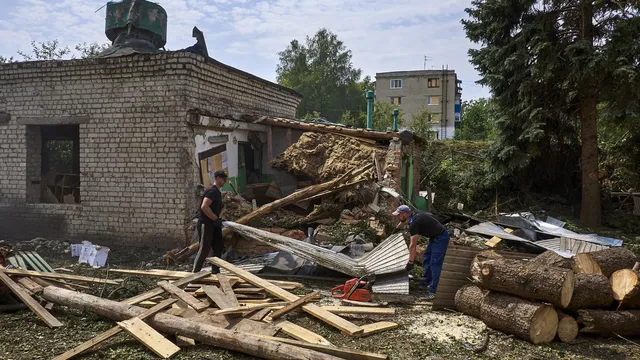Israel smuggles drone parts and ammunition into Iran to clear the way for its fighter jets.
Small teams armed with the smuggled equipment attacked Iran's air defenses and missile installations.
The operation was intended to reduce Iran's missile capabilities and establish air superiority.
By the time Israel's advanced F-35 fighter jets swooped in to attack Iran's nuclear facilities and military leadership, a lower-tech threat had already crossed the border and was in position to clear the way, according to a report in The Wall Street Journal.
Israel spent months smuggling parts for hundreds of quadcopter drones equipped with explosives — in suitcases, trucks, and shipping containers — as well as ammunition that could be fired from unmanned platforms, according to people familiar with the operation.
Small teams armed with the equipment have positioned themselves near Iranian air defense posts and missile launch sites, the people said. When Israel's attack began, some of the teams destroyed the air defense systems, while others struck the missile launchers as they emerged from their shelters and prepared to fire, one of the people said.
The operation helps explain the limited nature of Iran's response to Israeli attacks so far. It also offers further evidence of how ready-made technologies are changing the battlefield and creating new dangerous challenges for government security.
The feat comes just weeks after Ukraine employed a similar tactic, using drones smuggled into Russia in the roofs of containers to attack dozens of military aircraft used by Moscow to attack Ukrainian cities. The intelligence operations showed how attackers are using creativity and inexpensive drones to circumvent sophisticated air defense systems and destroy valuable targets in ways that are difficult to stop.
The operation by Israel's Mossad spy agency was aimed at removing threats to Israeli military aircraft and taking out the missiles before they could be fired at cities. Teams on the ground destroyed dozens of missiles before they could be fired in the early hours of the attack, one of the people said. The Israeli Air Force also focused heavily on air defenses and missiles in the early days of the campaign.
In the end, Iran fired about 200 rockets at Israel in four salvos on June 13 and during the night of June 14, killing three people and causing property damage in the Tel Aviv area. Israel had expected a much more serious response, says Sima Shine, a former senior intelligence officer in the Mossad and now head of the Iran program at the Institute for National Security Studies, a think tank in Tel Aviv.
However, Iran has vast resources that it could mobilize for more serious attacks.
“We expected much more. But that doesn't mean there won't be much more today or tomorrow,” Shine said.
The attacks on Iran's air defenses were more decisive, which helped Israel quickly establish air superiority, she said. The Israeli Air Force has also aggressively targeted these defenses.
Israeli military spokesman Efi Defrain said on June 14 that Israel had attacked targets in Tehran overnight with 70 fighter jets that spent more than two hours in the Iranian capital's airspace.
“This is the deepest distance we have operated in Iran so far. We have created freedom of action in the air,” Defrain explained.
In a recommendation by Iranian intelligence services, published on June 14 in some of the country's newspapers, including the Islamic Revolutionary Guard Corps-affiliated Tasnim, people were told to be on the lookout for Israel's use of pickup trucks and cargo trucks to launch drones.
Israel has deeply integrated ambitious intelligence operations into its military actions. Last fall, it launched a two-month campaign against the Lebanese militia Hezbollah with an operation in which thousands of pagers and walkie-talkies carried by its ranks suddenly exploded.
The country also showed that its agents had penetrated deep into Iran. Last summer, Israel killed Hamas leader Ismail Haniyeh by smuggling a bomb into his heavily guarded room at a Revolutionary Guard guesthouse and detonating it while Haniyeh was attending the inauguration of Iran's new president.
During the current campaign, Mossad operations in Iran include searching for targets among the leadership in Tehran, according to one person familiar with the operations.
Unmanned aerial vehicles are a regular part of Israel's operations in Iran. In 2022, it used explosives-laden quadcopters to strike an Iranian drone manufacturing facility in the western city of Kermanshah. A year later, it used drones to attack an ammunition factory in Isfahan.
The spy agency began preparing for the current drone operation years ago, the people said. It knew where Iran kept missiles ready for launch, but had to be in position to attack them, given the size of the country and the distance to Israel.
The Mossad imports the quadcopters through commercial channels, often using unwitting business partners. Agents on the ground collected the munitions and distributed them among the teams. Israel trained the team leaders in third countries, and they in turn trained the teams.
The teams observed how Iran manufactured missiles and then destroyed them before they were ready for launch, the person said. The Mossad knew that the trucks transporting the missiles from the warehouse to the launch site were a bottleneck for Iran, which has four times more missiles than trucks.
The teams destroyed dozens of trucks, one of the people said. They continue to operate on the ground and on June 13.
The operations — and their disclosure — have an important additional effect, said Shain, a former head of Mossad's Iran department.
“No one in Iran's upper echelons can be sure that they are not known to Israeli intelligence and will not be targeted. It's not just about the damage caused, but also the nervousness it brings,” she said. | BGNES

 Breaking news
Breaking news
 Europe
Europe
 Bulgaria
Bulgaria







